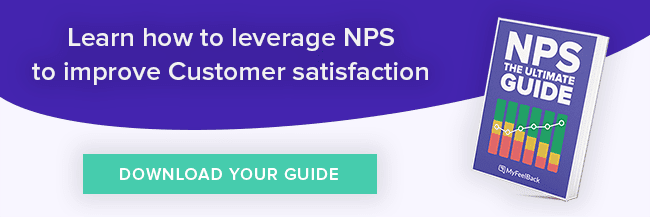We already talked about Net Promoter Score (NPS) in several of our blog posts, but let us start again by saying what NPS really is. NPS is a metric used to measure customer loyalty which was developed by Fred Reichheld, Bain & Co, and Satmetrix Systems. Reichheld introduced NPS in his 2003 article “One Number...
We already talked about Net Promoter Score (NPS) in several of our blog posts, but let us start again by saying what NPS really is. NPS is a metric used to measure customer loyalty which was developed by Fred Reichheld, Bain & Co, and Satmetrix Systems. Reichheld introduced NPS in his 2003 article “One Number You Need to Grow” as a way to measure the loyalty between a provider (company, employer, or any other entity) and a consumer.
The whole idea of NPS is based on consumers’ replies to just one question: “How likely is it that you would recommend our company/service/product to your friend or a colleague?”.
The scoring for this answer is typically based on a scale from 0 to 10. Those who reply with a score of 9 and 10 are considered promoters and will typically buy more, be more loyal, and refer your company/product/service to others. Consumers who reply with a score of 0 to 6 are called detractors and will not exhibit any value-creating behavior. Those whose answers fall between 7 and 8 are passives and they fall in the middle of promoters and detractors. The NPS is then calculated by subtracting the percentage of detractors from the percentage of promoters while passives count towards the total number of respondents and decrease the percentage of detractors and promoters while pushing the score towards zero.
In short, NPS is often referred to as the “one number that you need to grow” and has been popularized by many Fortune 100 companies.
According to Aberdeen Group, businesses with best Customer Experience Management (CEM) programs add an average of $273 million to their revenue, are able to reduce customer turnover by 16.2%, increase spend of their existing customers and open new revenue streams by adding new accounts within their customer base.
Even though the numbers are obvious, there is still a considerable number of sceptics to the idea of NPS. That is why we decided to devote this blog post to debunk 5 top myths surrounding NPS.
Click here to discover what customers like about you.
#1 NPS cannot predict your growth
Besides being a great way to measure your customer loyalty, a high NPS can grow your business. There have been numerous studies that all found a strong correlation between having a high NPS and revenue growth. These studies showed that companies who adopt the NPS question and use it a metric, have increased financial growth as they focus more and more on increasing their NPS.
#2 NPS doesn’t help your business grow
When you look at your NPS, it’s a representation of your company as seen through your customers’ eyes. Deciding to send out a NPS survey to your customers is great step towards understanding your customers and the level of their loyalty. But you will not do much in growing your business if you don’t take action after receiving the results. For instance, if you find out that you have a really low score, you can send out a more detailed survey to pinpoint the root cause of the issues and then take immediate action to fix them. If your NPS is high, you can engage your promoters and further increase their loyalty or use their testimonials to generate interest with new customers.
#3 NPS is not an actionable methodology
Many NPS sceptics argue that NPS is not actionable. We have to somewhat agree with this and say that, on its own, NPS is more diagnostic than actionable.
By itself, it is just a simple metric that you cannot use for much. But the real power of NPS is hidden in the comments section which allows you to discover what promoters like about you, and what your detractors hate. Having this information, you can make targeted actions to address the concerns of your detractors and passives which will have a tremendous effect on your churn, loyalty, and your growth.
#4 NPS is a customer experience metric
The problem with this myth is the fact that NPS does not trouble itself with CX but only captures your customers’ willingness to recommend you to their friends based solely on the experience they had while dealing with you. In other words, based on the customer experience that you gave them, your NPS will give you a % of customer loyalty that you can expect from them.
NPS is only one way to measure customer loyalty and it is not, in any case, the only metric that you should take into account when measuring your customer experience. You should always follow up your NPS with other questions to make it more relevant to the overall customer experience. For instance, following up with a customer survey can give you data-driven insights that you can use to improve your customer experience (and your NPS).
#5 NPS fails to predict loyalty behaviors
Timothy L. Keiningham et al. argue that recommending intention alone does not suffice as a single predictor of customer’s future loyalty behaviors and that the use of multiple questions instead of a single one will perform significantly better in predicting customer loyalty.
Additionally, Birgit L. Pollack and Aliosha Alexandrow in their Journal of Services Marketing say that considering the current state of evidence, NPS cannot be recommended as a predictor of growth nor financial performance.
While we must agree that you should ask your customers multiple questions, we must say that NPS alone does a good job in predicting loyalty. Gathering NPS feedback from your customers and acting according to that feedback, will give you a way to increase the number of your brand advocates that will allow you to grow your business and gain a competitive edge over your competition.








